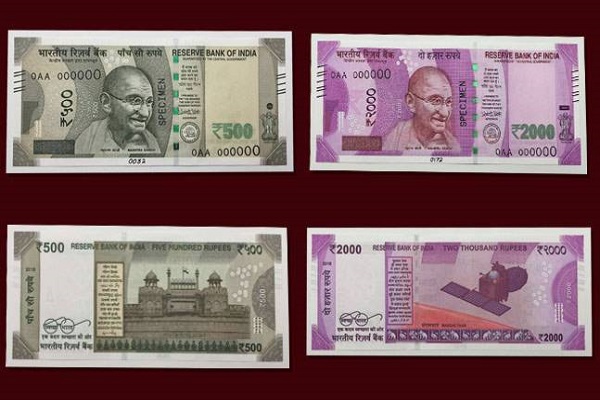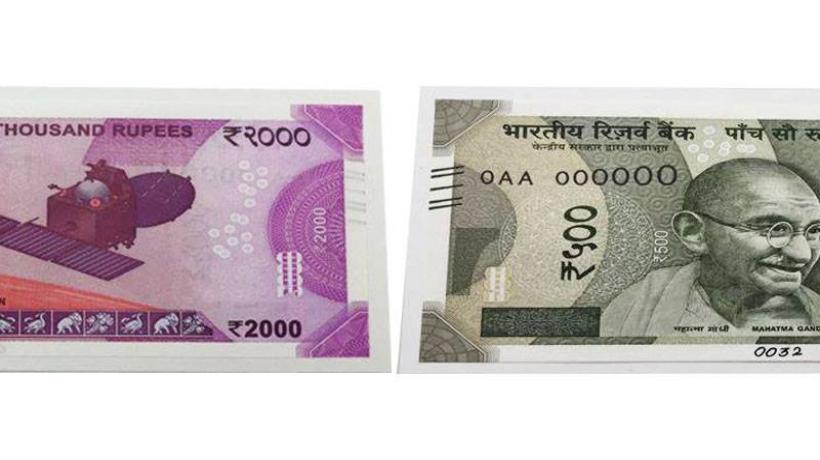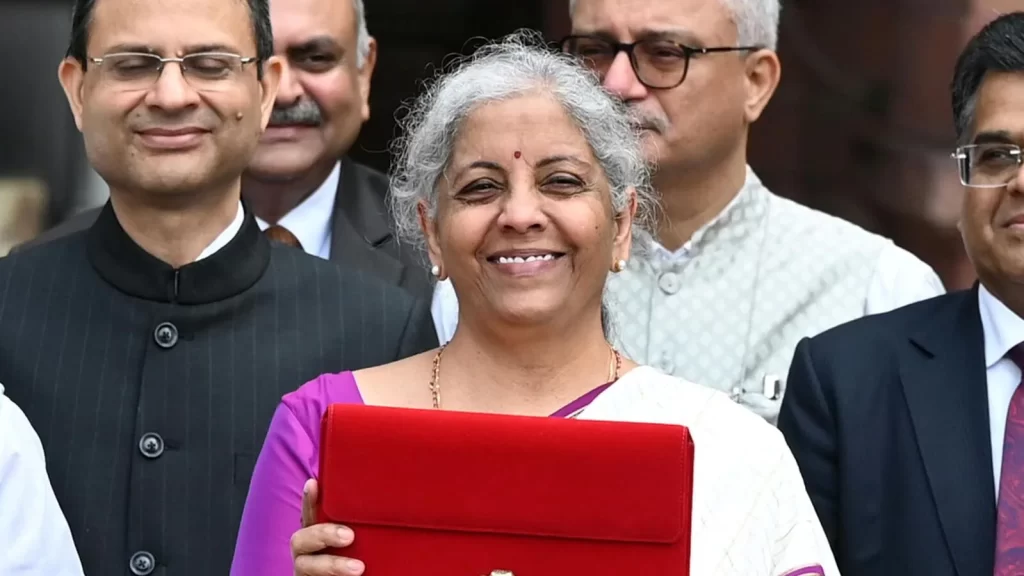By Kunal Dave
Desperate times call for desperate measures. On Tuesday 8th November 2016 at 20:00 hours, the Prime Minister of India, Narendra Modi made a historic announcement about the demonetization of currency notes of higher denomination of value Rs.500 and Rs.1000. These notes would cease to be a legal tender from midnight, at 9th November 2016.
This is one of the biggest moves taken by the Modi Government to restrain black money, corruption and terror financing. This sudden move, taken by the government, left people amazed but also unsure, as they were unable to digest what this would mean to their daily lives. The Prime Minister appealed to everyone to ignore the temporary hardship and to enjoy this festival of integrity and credibility. India Inc praised the move taken by the government while some surmised it as disruptions in the economy or ‘surgical strike’ on black money.
Currency notes can be exchanged at banks and post offices from November 10 to December 30. Also the medicine shops and hospitals will accept the money for next 72 hours after the policy is announced.
‘Keeping in mind the supply of new notes, in the first few days, there will be a limit of Rs 10,000 a day and Rs. 20,000 a week,’ Modi said, on Tuesday evening. The limit for exchange will be Rs. 4,000 up till November 24th and will be subsequently increased up till 30th December. The Prime Minister announced that government will launch new Rs 500 and Rs. 2000 notes and these notes will have special features to prevent unusual activities.

BRICKBATS:
After the news came out many famous Political and Corporate leaders had a lot to say on this demonetization policy by the Government:
The Chief Minister of Bengal Mamta Banerji wrote on Twitter that PM had failed to get black money from outside India and was thus using such disruptive policies which would cause trouble to citizens.
The Congress criticized the Prime Minister for introducing the policy during harvest season which would affect farmer’s cash transaction.
BOUQUETS:
While a few criticized the Government many also praised the Government for taking such a huge step.
ICICI Chief Chanda Kochhar praised the PM for implementing this policy and called it a “game changing” policy by the government which would help to cool down inflation and bring structural change in the environment. The sustained high inflation in the country is one of the biggest factors which has kept the lending rates among the highest in the world. She assured administrative efficiency and lent her full support to implement this policy of the government and make smooth transactions to help people.
EFFECTS OF THIS WITHDRAWAL OF CASH:
Realty Sector:
The withdrawal of Rs500 and Rs1000 notes is all set to impact the realty sector. The realty sector was already facing a slowdown in sales. This new policy has worsened the situation in this sector. Majority of the transaction in the realty sector happened in black up till now where buyers paid around 60-70% of the money in cash to the builder and these transactions had no legal recordings leading to builders having stacks of undisclosed income stored in their vaults.
Implementation of this scheme will surely reduce the land prices by 30% and reduce the rates of mortgage and home loans to 8%. It will reduce the price of land holdings and suck out the black money held by the builders which will result in a major crash in the Realty Sector.
Election Campaigns:
This would also affect the camping of Political parties in the upcoming UP Elections. Majority of the transactions in any election take place in cash of higher denomination. They go up to thousands of crores of rupees and only a few hundred crores are shown in transaction, in spite of certain rules mentioned by the Election Commission. The distribution of money as “cash for votes” especially in rural areas of the state is common and will now be highly influenced. Many transactions to run election campaigns are done with values of higher denomination such as 500 and 1000 will now be hampered. This new policy will affect the small businessmen who supply various necessary material required for campaign and also affect the leaders of Political Parties who try to make money out of election campaigns.
Organised Sector:
There will also be a huge impact on the organised and unorganized sectors. The organised sector which consists of Banks and Insurance companies will first face uphill challenges in the initial days as many people will knock on their doors for currency exchange and they will not be able to fulfill the need of every account holder. But on a long term perspective, there will be people applying for home loans and mortgage of property as rate of interest will fall, which will help banks in credit creation and circulation of money in markets as well.
Unorganized Sector:
The Unorganized sector consists of all those small enterprises which do not require any registration from the government. These are business enterprises that have small capital and basically work on cash transactions on a day to day basis. These enterprises will suffer a major setback as to sustain without cash becomes difficult for them for a longer period of time. Some work on day to day profits and deal in 500 and 1000 rupee notes and run their business on buying and selling on a continuous basis daily, and these are the businessmen who will suffer the most as they have to almost shut their business for a few days.
Long-term Benefits:
Such strong decisions though disruptive to a certain extent, are really necessary and should be taken in order to eradicate corruption, black money, funding terrorism and increase in credit transactions in the economy to reduce the inflation.
Such decisions will bring long term benefits in the economy in terms of:
- reducing income in-equality,
- reduction in prices of commodities
- increase in purchase power of people and
- increase in GDP of the country by investing the money received by the in manufacturing sector to increase production and reduce unemployment and poverty in the economy.
The Jewellery Sector:
According to me this policy will have serious impact on Real estate and Jewellery Market. There could also be an impact on the demand for pure gold, which is definitely good for the industry. When it comes to the precious metals and gems industry, about 70-75 percent of the jewellers in the nation belong to the unorganized sector. India is the world’s largest gold consumer and imports a considerable amount of its total annual consumption of up to 1000 tones. It’s not that difficult to comprehend that the Jewellery industry will be one of the industries which would be affected the most and hopefully for the better.
The New Rules of Cash:
In 1978 the Janta Dal Government headed by then Prime Minister Morarji Desai took this step where 50% of the money declared was taken by the government while the other half was returned without asking questions. But now times have changed. We cannot compare that move with this one as the size of economy is really large now and the amount of wealth owned by people has increased considerably.
This time the Government will not only take 30% of your income but will also keep a record on your income and a video recording of your transaction with the bank.
Thus the government comes down with staunch ideology to remove black money and corruption from top to bottom.
Also the Government has now decided that all those with money value of more than 2.5 lakhs will have to face Income tax department and show their return files to cross verify their incomes, which if mismatched then the person has to pay tax plus 200% of the total amount of the money, which indeed will be a real blow to all the businessmen.
This will also expose the racket of fake currency going on in the country promoted by “neighbouring country” and their henchmen.
PM Modi’s decision of demonetization will cut off the parallel economy from its roots and this is a much-needed step as it was eating into the real economy.
The numbers and calculations for this are mind-boggling. According to the RBI press conference held on the 8th of November, there are 16.5 billion ‘500-rupee’ notes and 6.7 billion ‘1000-rupee’ notes in circulation right now. In addition to this, RBI data shows that the share of Rs.1000 notes in the stock of currency in circulation at the end of financial year 2014-15 was 39%. Rs. 500 notes accounted for a further 45% of currency stock.
Only time will tell us the true results and implications of this drastic move by the Government.




